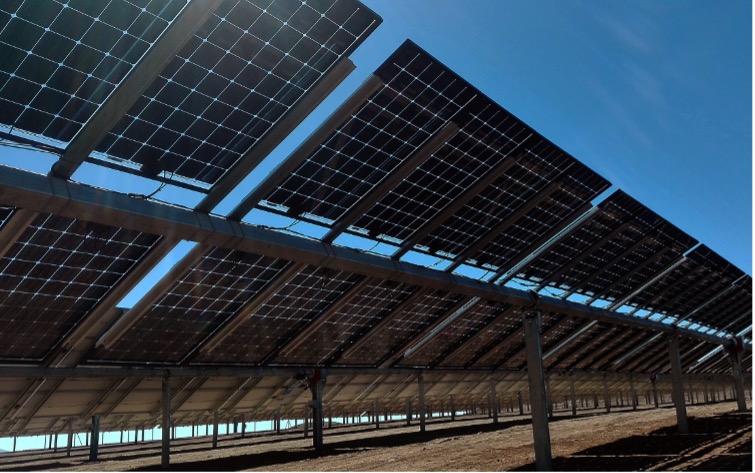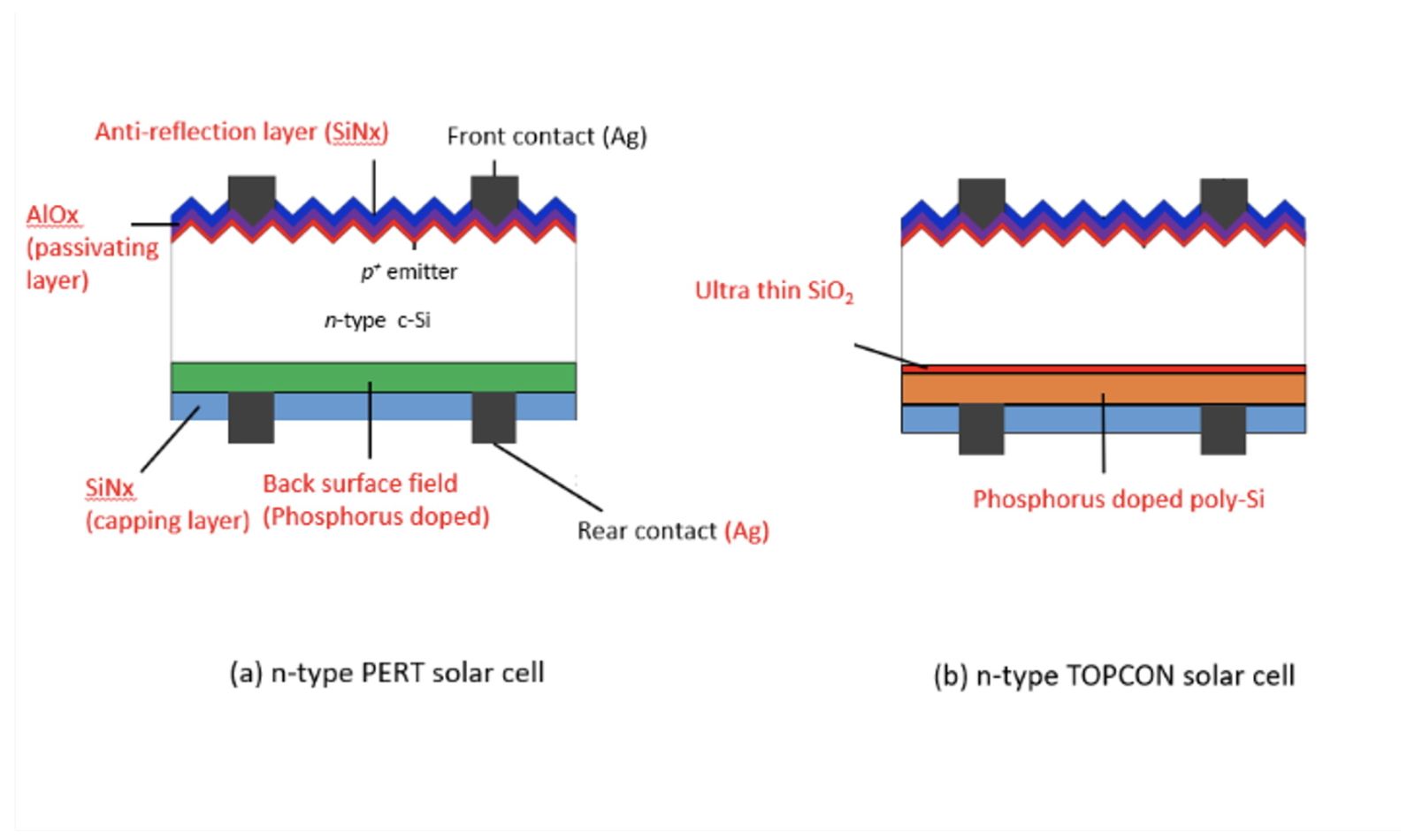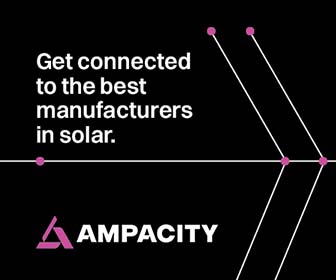The Bifacial Boost: TOPCon solar cell structure enhances energy yield
As the global solar industry matures and margins tighten, the spotlight is increasingly shifting from nameplate capacity to actual, real-world energy yield. In this landscape, bifacial modules have emerged as a game-changer, capable of harvesting sunlight from both front and rear surfaces. Among the advanced solar cell architectures vying for dominance, Tunnel Oxide Passivated Contact (TOPCon) technology stands out for its synergy with bifacial designs, promising improved efficiency and better energy output under diverse conditions. This article explores how the structural advantages of TOPCon technology are driving performance gains in bifacial photovoltaic (PV) systems, and why this matters for modern utility-scale solar deployment

Understanding TOPCon
TOPCon cells are a next-generation N-type silicon technology designed to reduce recombination losses and enhance surface passivation. At the heart of the design is an ultra-thin tunnel oxide layer sandwiched between a doped polysilicon layer and the base N type silicon wafer. This configuration minimizes surface recombination and allows for superior passivation of the rear side, which is crucial in bifacial operation. Topcon solar cell has front side also passivated by Alox layer and has lower power temperature coefficient, which improves its performance in hot climates. The architecture inherently supports higher open-circuit voltages (Voc) and better fill factors (FF), pushing cell efficiencies beyond 25.5 percent in mass production.
Unlike traditional PERC (Passivated Emitter and Rear Cell) technology which typically uses p-type silicon and Alox passivated rear surface with localized back surface field with aluminium, TOPCon’s structure on N-type wafers offers lower degradation rates and better performance in harsh environments. This structural compatibility with bifacial module design enables higher and more stable energy generation over time.

Installed Bifacial modules
Bifaciality advantage
Bifacial modules are engineered to capture light reflected off the ground or nearby surfaces, which is particularly advantageous in high-albedo environments such as deserts, snowfields, or reflective concrete rooftops. The effectiveness of bifacial gain depends significantly on the cell’s ability to efficiently collect and convert the rear-side irradiance.
TOPCon’s passivated rear surface and reduced recombination losses translate directly into superior bifacial performance. The bifaciality factor (the ratio of rear-side to front-side efficiency) for TOPCon cells often exceeds 80 percent, compared to around 70 percent for PERC cells. This means that the rear side of a TOPCon bifacial module can also generate more electricity under optimal conditions, significantly boosting total energy yield.

Real-world yield
In actual plant conditions, the advantages of TOPCon bifacial modules manifest in higher specific energy yields (kWh/kWp). Field studies and simulation models show that in high-albedo regions, bifacial TOPCon modules can deliver 8–15 percent more energy annually compared to monofacial modules, and 3–5 percent more than bifacial PERC modules. This enhanced yield becomes especially attractive in regions with long daylight hours, diffuse irradiation, and open racking systems that allow for optimal rear-side exposure.
Moreover, the n-type base of TOPCon cells offers greater tolerance to light-induced degradation (LID) and potential-induced degradation (PID), both of which can erode long-term performance. This contributes to better performance ratios and long-term energy predictability, essential for investors and asset managers focused on lifecycle returns.
Design considerations
To fully capitalize on the advantages of TOPCon bifacial modules, system designers must account for several factors:
- Albedo management: Ground surface treatment plays a significant role in enhancing rear-side irradiance. White gravel, reflective films, or concrete pads can significantly improve albedo and, hence, bifacial gain.
- Mounting height and tilt: Elevated and optimally tilted modules allow more light to reach the rear side. However, increased mounting height must be balanced against higher wind load requirements and structural costs.
- Spacing and row-to-row shading: Proper spacing minimizes self-shading and ensures consistent irradiance on both module surfaces throughout the day.
- Module bifacial factor: Selecting modules with a high bifaciality factor and known rear-side power profiles helps improve system predictability.
These design variables, combined with the higher bifaciality of TOPCon cells, make it possible to squeeze more energy out of the same land area — a critical consideration in markets with land constraints or high development costs.
Economic and operational implications
While TOPCon modules carry a higher upfront cost compared to standard PERC modules, the increased energy yield and better degradation profile improve the overall levelized cost of electricity (LCOE). The longer module life, coupled with more predictable generation, makes TOPCon bifacial systems attractive to utility-scale developers, especially in competitive tariff markets.
Moreover, as the global market shifts toward performance-based tenders and merchant power models, yield consistency and reliability become as critical as capital cost. TOPCon bifacial modules support this transition by offering robust energy delivery across a variety of climates and operational conditions.
Global outlook
TOPCon technology is rapidly gaining traction, with several major manufacturers ramping up gigawatt-scale production lines. As the cost delta with PERC continues to narrow due to economies of scale and process optimization, TOPCon is poised to become the mainstream technology for high-efficiency modules, especially when paired with bifacial designs.
In markets such as the U.S., where the Inflation Reduction Act is accelerating demand for high-performance, domestically assembled modules, TOPCon bifacial modules could play a pivotal role. Their compatibility with agrivoltaics, floating solar, and other space-optimized applications further expands their utility
Conclusion
The combination of bifacial architecture and TOPCon cell design represents a convergence of innovation aimed at maximizing real-world solar plant performance. While the industry continues to explore tandem cells and perovskite-silicon hybrids for future breakthroughs, TOPCon bifacial modules offer a mature, scalable, and field-proven solution for today’s energy transition needs.
Vineet Mittal is Chairman of Avaada Group, a diversified energy conglomerate with portfolio spanning across Renewable Energy, Solar PV Manufacturing, Green Data Centers, Green Hydrogen and its derivatives (including Green Ammonia and Green Methanol), Pumped Hydro Storage, and Battery Energy Storage Solutions.
Avaada | avaada.com
Author: Vineet Mittal








.png?r=5352)



